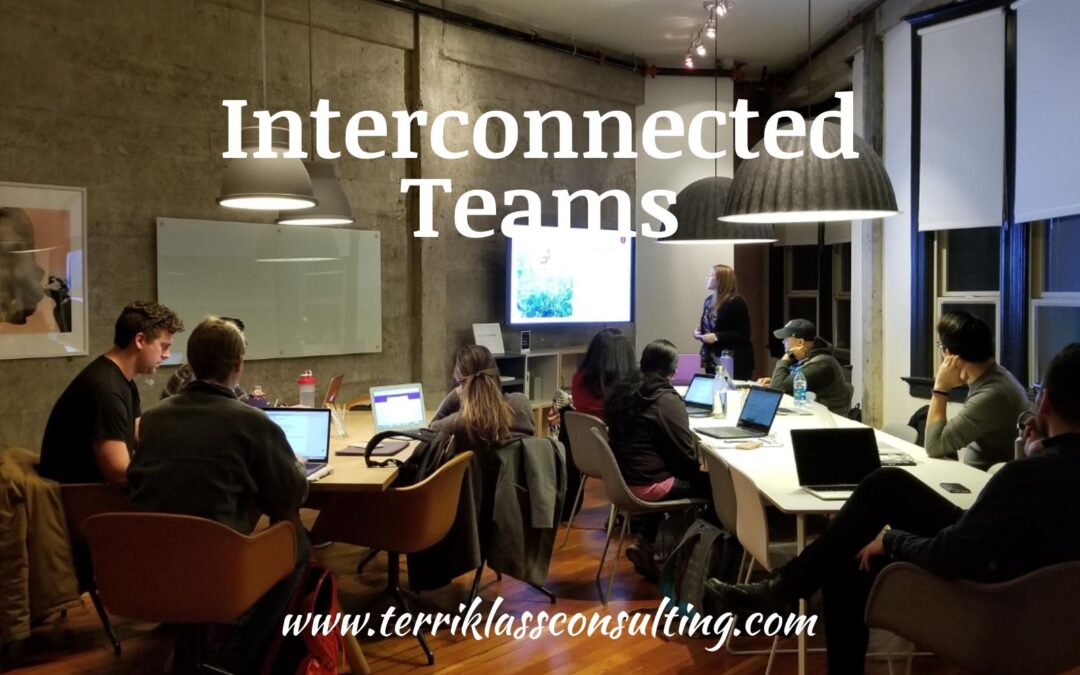One of the biggest changes that many leaders are facing and grappling with today is a result of the never-ending pandemic. In the past, leading a team as well as being leaders on a team, mostly focused on goals, roles, and responsibilities. A big picture vision was introduced on a macro-level and each team within the organization committed to ways they would support and achieve the direction proposed. It seemed fairly straight-forward where KPI’s (key performance indicators) were clearly mapped out.
So what has changed for teams? The most important part of any organization- the people connection. Teams are not seeing one another in person every day. That huge shift has disrupted every organization to the core and toppled a once assumed connection that may no longer exist. Sure some teams are going into the workplace two or three days a week, and trying to recreate an interconnected space. Yet, the work environment is flowing in different ways. There is even a formality to seeing our team members through planned in-person meetings or brainstorming sessions. It can sometimes feel forced and unnatural. Walking by each other in hallways and just stopping for a few minutes to catch up is gone. That organic meet-up has virtually disappeared.
I can hear some leaders screaming out, “Remote work is the way of the future. No one wants to go back to a five- day work climate.” I’m not suggesting that. What I am noticing is that leaders need to create innovative ways to build impactful teams where team members feel deep connections.
Six Leadership Strategies To Build Highly Connected Teams
1. Involve Team Members In Creating Team Goals
Leaders know intuitively that when they include the ideas and suggestions from their teams, they are more likely to gain buy-in. In addition, when teams have a fuller understanding of how their goals fold into the larger organizational goals, they feel that their contributions are more meaningful.
When leaders involve team members in creating team goals, they are building trust and connection. Click To Tweet2. Encourage and Listen To Feedback
What is the point of being a leader if we aren’t open to the ideas and suggestions of our team members? Grow future leaders by listening to feedback and staying openminded to different perspectives. Some questions leaders might ask their teams may include:
- What is our team’s big hairy goal (BHG)?
- How can we build on last year’s successes?
- What can we learn from last year’s missteps and fails?
3. Bring Teams Together To Dream and Schmooze
It is just good leadership practice and team building to establish team connections that focus on dreaming as well as getting to know one another. One of the greatest challenges in virtual meetings is the inability to get to know about what teammates like to do outside of work. That knowledge helps teams see complete pictures of the people they work with. Dreaming also brings teams closer together as it empowers members to feel their ideas are important.
4. Build New Rituals Into Team Experiences
Perhaps this leadership strategy of building highly connected teams is the most fun of all. Rituals are an important part of our work worlds. How we honor one another and celebrate accomplishments is essential and unique to each team.
- Design new ways to celebrate birthdays in a hybrid way. Maybe send a special dessert to someone at home on their birthday.
- Devise creative methods of sharing news about one another.
- Begin virtual meetings with a two-word check-in.
- Rituals bring people together using common norms and behaviors.
5. Communicate Clearly and Often
When teams are not together in the same space, there can be mixed messaging. That information confusion can easily disconnect a team. Leaders need to communicate to their teams frequently and with great clarity. Somehow the written word doesn’t always resonate with people and can be missed or sound confusing. When messages are re-shared, it can be helpful using different words to communicate the same message.
6. Prioritize Mental Health
In the world of work today, with so much juggling in our lives, it is so helpful to lead with compassion and empathy. Some wise person reminded me that we don’t know what goes on behind closed doors which is to say that leaders have no way of knowing the true challenges of a team member. In order to build a highly connected team:
- Ask how team members and their families are doing.
- Offer support if they seem to be struggling with juggling.
- When teammates need some time off, be flexible and compassionate.
- Try to imagine being in someone else’s shoes.
What leadership strategies help you build a highly connected team?

